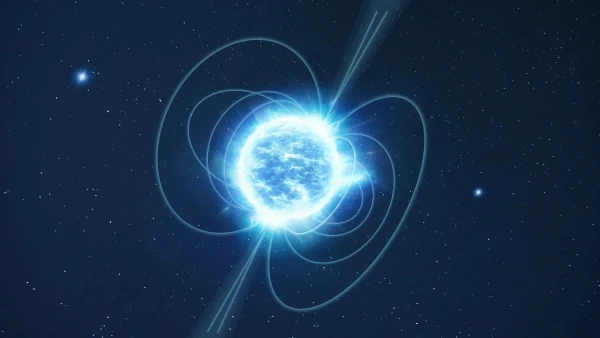
Neutron stars are such extreme objects that a tablespoon of their material weighs about a billion tons, writes Focus.
Physicists have determined how compact neutron stars, the remnants of massive stars that exploded in supernovae, can become, and have found a way to test the properties of nuclear physics under very extreme conditions. The study is published on the preprint server arXiv, writes Space.
The Problem with the Size of a Neutron Star
When a massive star explodes in a supernova, a neutron star is formed. This is a small (about 10 km in diameter), but very dense object, with a mass of up to 3 solar masses. Although models predict the diameter of neutron stars to be around 10 km, their exact size remains unclear. According to physicists, while the mass of a neutron star can be determined with high precision, there are problems with its size.
There are several reasons why determining the diameter of a neutron star is difficult. All known neutron stars are located very far away, but the main issue is related to what physicists call the equation of state. It describes the density and pressure inside the neutron star, from which its diameter and other characteristics can be accurately determined.
The problem is that the conditions inside a neutron star are so extreme that they push our understanding of nuclear physics to a new level. A tablespoon of neutron star material can weigh a billion tons. Under such high pressure, atoms are compressed, and positively charged protons merge with negatively charged electrons, forming an object filled with neutrons.
Exotic Physics
But exotic physics may prevail in the center of a neutron star. For example, hypothetical particles called hyperons may exist there, or the immense gravity may cause neutrons to behave in very strange ways. It is impossible to test this, as physicists cannot reproduce the conditions inside a neutron star in the laboratory.
Therefore, instead of a single equation of state for neutron stars, there is a whole list of possible equations of state, one for each model describing the possible conditions inside a neutron star.
To assess how compact a neutron star can become, physicists examined tens of thousands of equations of state. However, to simplify the task, they only considered the maximum possible neutron star in each case.
According to the scientists, for each equation of state, there is a maximum allowable mass. Any mass of a neutron star exceeding this maximum will lead to the formation of a black hole. Observations indicate that the maximum allowable mass of a neutron star should be between two and three solar masses.
A Surprise for Physicists
Physicists were surprised to find that there is an upper limit to the compactness of a neutron star, and based on this, the ratio between the mass of a neutron star and its diameter is always less than 1 to 3.
According to the scientists, by measuring the mass of a neutron star, one can say that its diameter must be three times its mass. Physicists also found that this ratio holds true for all equations of state, regardless of the maximum mass of the neutron star.
At first glance, this may seem surprising, as one might automatically assume that the most massive neutron stars would be the most compact, as their gravity would be stronger, trying to force them to compress. Instead, the exotic nuclear physics at work in neutron stars seems to balance the situation, the scientists say.
Now, the theory remains to be tested with future observations.















Leave a comment